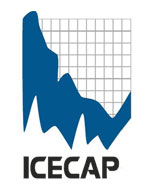by David F. Noble, ZNET Science, May 08, 2007
Don’t breathe. There’s a total war on against CO2 emissions, and you are releasing CO2 with every breath. The multi-media campaign against global warming now saturating our senses, which insists that an increasing CO2 component of greenhouse gases is the enemy, takes no prisoners: you are either with us or you are with the “deniers.” No one can question the new orthodoxy or dare risk the sin of emission. If Bill Clinton were running for president today he would swear he didn’t exhale.
How did we get here? How did such an arcane subject only yesterday of interest merely to a handful of scientific specialists so suddenly come to dominate our discourse? How did scientific speculation so swiftly erupt into ubiquitous intimations of apocalypse? These are not hypothetical questions but historical questions, and they have answers. Such events as these do not just happen; they are made to happen. On the whole our ideas tend not to be our own ideas: rarely do we come up with them ourselves but rather imbibe them from the world around us. This is especially obvious when our ideas turn out to be the same as nearly everyone else’s, even people we’ve never met or communicated with. Where did this idea about the urgent crisis of global warming and CO2 emissions come from and get into our heads, given that so few of us have ever read, or even tried to read, a single scientific paper about greenhouse gases? Answering such a question is not as difficult as it might seem, for the simple reason that it takes a great amount of reach and resources to place so alien an idea in so many minds simultaneously so quickly, and the only possessors of such capacity and means are the government and the corporations, together with their multimedia machinery. To effect such a significant shift in attention, perception, and belief requires a substantial, and hence visible and demonstrable, effort. See the full essay here
WASHINGTON, DC – Sen. James Inhofe (R-Okla.), Ranking Member of the Environment and Public Works Committee, today introduced the Gas Petroleum Refiner Improvement and Community Empowerment Act of 2007, or the Gas PRICE Act, designed to ease America’s soaring gas prices and work toward achieving energy security. As the Ranking Member and former Chairman of the EPW Committee, Senator Inhofe has not only raised concerns about soaring energy prices and energy security over the years, he has also worked to provide sensible solutions. While Chairman, Senator Inhofe conducted a series of hearings detailing how environmental regulations impact energy security. These hearing led to Senator Inhofe introducing the Gas Price Act in 2005 aimed at improving and expanding domestic energy supply in the United States. The bill introduced today builds on that legislation but is different in a few material ways. Today’s Gas PRICE Act answers the understandably loud cry from the public to increase clean fuel supplies from domestic sources.
“Today’s Gas Price Act will increase domestic fuel supplies in several significant ways. Importantly, my bill redefines and broadens our understanding of a ‘refinery’ to include a ‘domestic fuels facility.’ Oil has been and will continue to play a major role in the US economy, but the future of our domestic transportation fuels system must also include new sources of energy such as ultra-clean syn-fuels derived from coal and cellulosic ethanol derived from home grown grasses and biomass. The Gas PRICE Act improves the permitting process for the expansion of existing and construction of new domestic fuels facilities, as well as encourages economically distressed communities to consider siting ultra-clean syn-fuels and cellulosic ethanol refineries in their towns. The public demands more supplies but they also demand that they be clean. My bill establishes an EPA program assessing the use of these ultra-clean syn-fuels as a pollution control strategy. Last, in order for there to be a viable cellulosic biofuel market, stakeholders and the public must know exactly what our renewable fuel reserves potentially may be. This legislation requires a task force to determine just that. See EPW Press Release
Senator Inhofe said during today’s Environment & Public Works Committee Hearing that “It is hypocrisy for California policymakers to try to be the tail that wags the dog when it comes to the Clean Air Act.” California was granted a unique provision of the Clean Air Act to help it address its extensive pollution. Although several areas in California are among the most polluted in the country and the furthest out of compliance with the Act, the state is using the waiver provision to try to set national policy on greenhouse gases. Ironically, Senator Inhofe also noted that California has been cooling over the last two decades.
As I learned more about efforts to control pollution in this country, I found out that California is the only State in the Union that is extensively ignoring federal law,” Senator Inhofe added. Senator Inhofe also pointed to California’s inconvenient temperature trends. “I know many Californians proudly say that their state leads the nation when it comes to the environment. While I disagree when it comes to California’s commitment to air quality, it may be true in one circumstance. According to the National Oceanic and Atmospheric Administration, over the last two decades, California’s temperature has cooled by .06 °C – or about a third of a degree per century. Yes, I said cooled. So if Russia’s top solar scientist is correct that the Earth is heading into a cooling phase, California is indeed leading the nation and even the world,” Senator Inhofe said. See the blog story here


